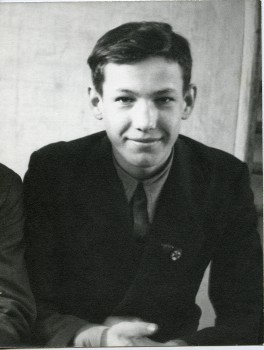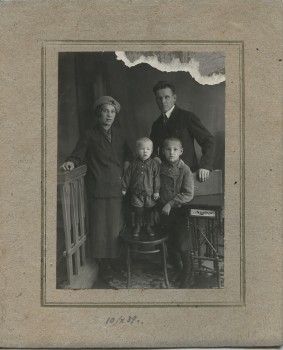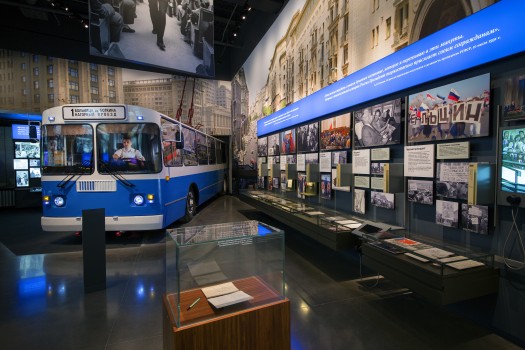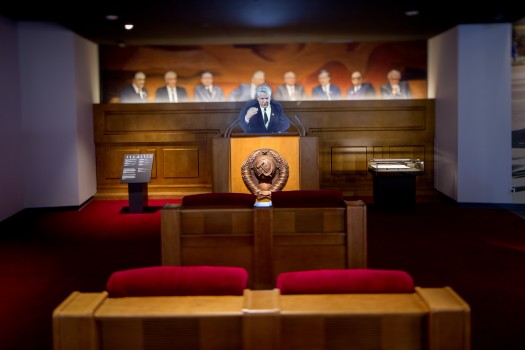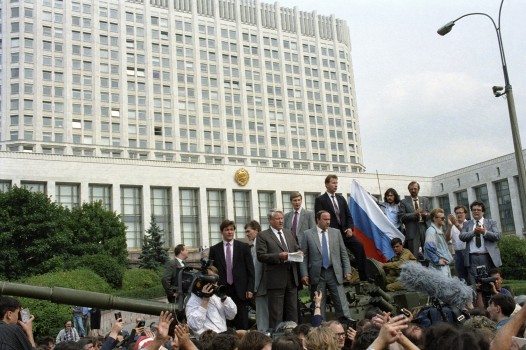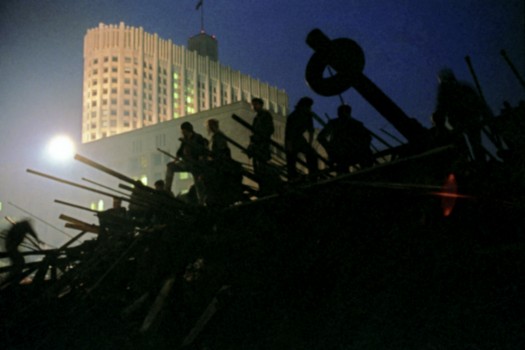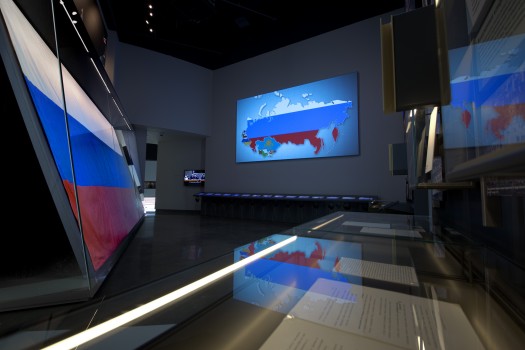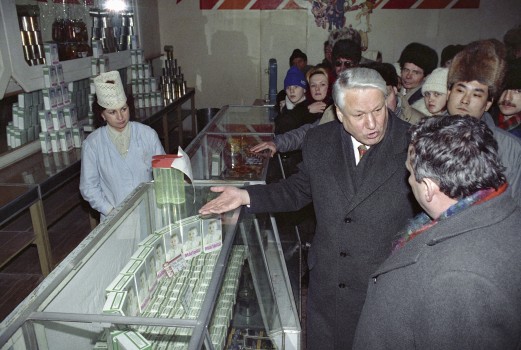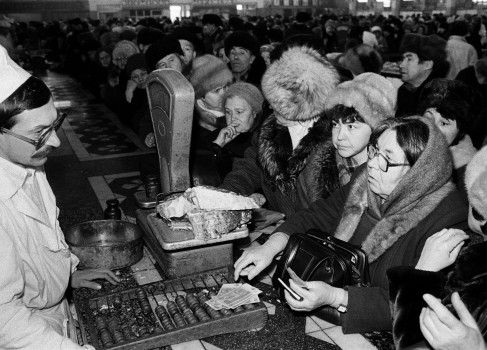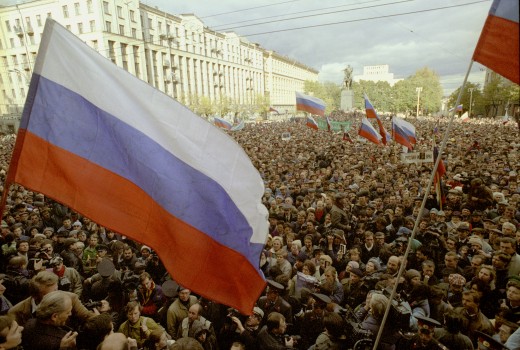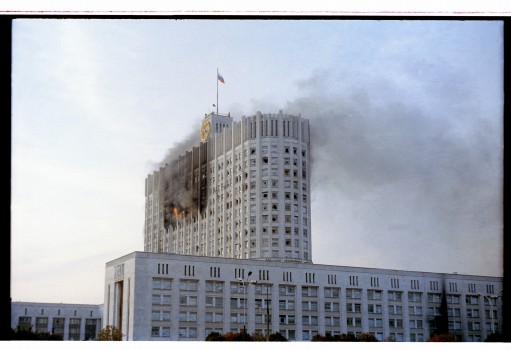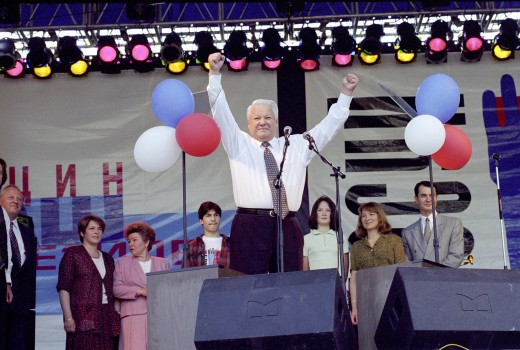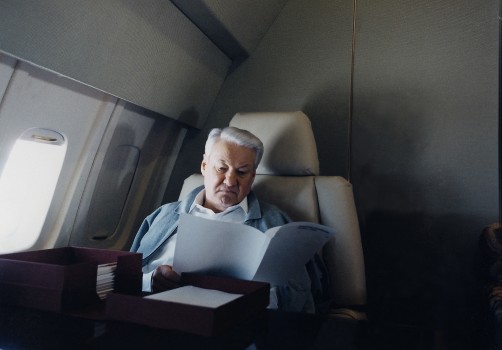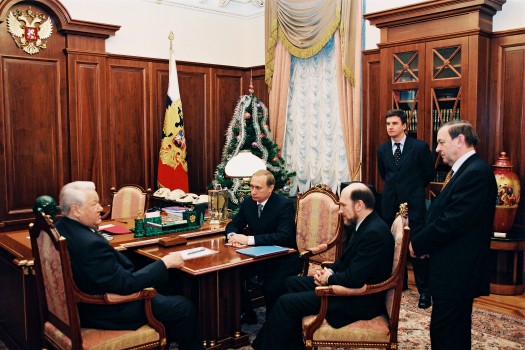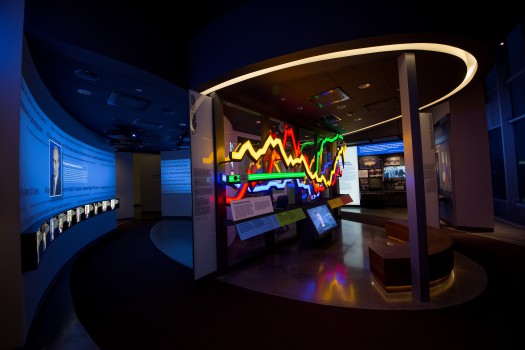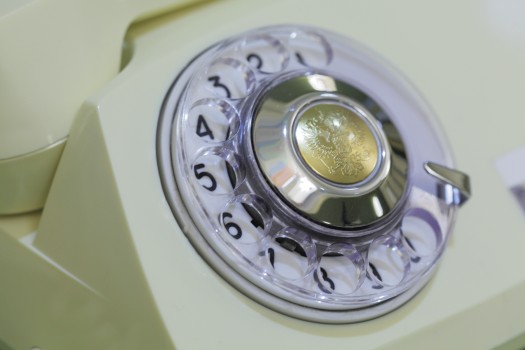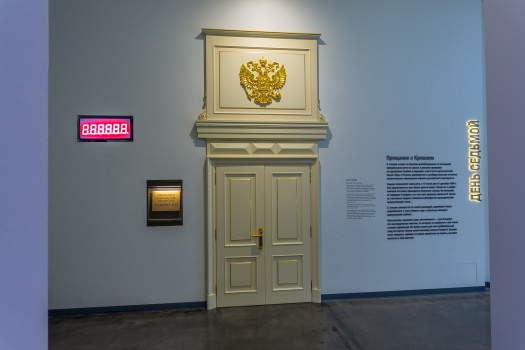Музей и Арт-галерея:
31 декабря и 1 января – выходные дни
2 - 11 января – рабочие дни
Ельцин Центр:
31 декабря и 1 января – с 10:00 до 18:00 2 - 11 января – с 10:00 до 22:00
Сувениры можно приобрести в музейном магазине, в книжном «Пиотровский» и в интернет-магазине Piotrovsky.store.
Билеты в музей
Экскурсии
Заказ экскурсий
Индивидуальные экскурсии вы можете заказать заранее на удобное вам время в любой день, кроме понедельника по телефону +7(909) 006-70-70 (WhatsApp, Viber, Telegram).
Также возможен заказ тематической экскурсии или посещение музея с квестом-путеводителем. Можно взять в аренду аудиогиды (100 рублей) – правила аренды.
Дополнительная информация: +7 (909) 006-70-70
Индивидуальные экскурсии вы можете заказать заранее на удобное вам время в любой день, кроме понедельника по телефону +7(909) 006-70-70 (WhatsApp, Viber, Telegram).
Также возможен заказ тематической экскурсии или посещение музея с квестом-путеводителем. Можно взять в аренду аудиогиды (100 рублей) – правила аренды.
Дополнительная информация: +7 (909) 006-70-70
Часто задаваемые вопросы
Метро: от ст. м. «Динамо» пешком 20 минут (1,5 км), от ст. м. «Площадь 1905 года» пешком 15 минут (1 км).
От аэропорта «Кольцово»: Автобус № 65, 100 до ж/д вокзала.
От ж/д вокзала и автовокзала «Северный»:
Метро: ст. м. «Уральская» до ст. м. «Площадь 1905 года» затем автобус № 67 до ост. «Ельцина» или пешком 15 минут (1 км).
Автобус: № 043, 45, 67 до ост. «Ельцина».
Трамваи: № 3, 7, 23 до ост. «Ельцина».
От автовокзала «Южный»:
Метро: ст. м. «Чкаловская» до ст. м. «Площадь 1905 года»
Автобус: № 67 до остановки «Ельцина», № 51, 52, 57, 62, 67, 81, 93 до ост. «Метро 1905 года».
Ближайшие остановки транспорта (500 метров):
Автобусы: ост. «Улица Бориса Ельцина» № 043, 45, 67; ост. «Драмтеатр» № 043, 45, 67, 150, 158
Трамваи: ост. «Улица Бориса Ельцина», № 7, 23 – в обе стороны; № 3, 12, 21 — только в одну сторону маршрута.
Остановка «Площадь 1905 года» у памятника Ленину — 800 метров от Ельцин Центра:
Автобус: № 043, 45, 46, 48, 49, 51, 52, 59, 62, 64, 84, 87, 93
Трамвай: № 2, 6, 13, 15, 16, 18
Остановка «Метро 1905 года» — 1 км от Ельцин Центра
Автобус № 50, 54, 054, 57, 60, 67, 81
Для подготовки к посещению Музея и Арт-галереи можно воспользоваться социальной историей:
Скачать социальную историю Музея
Скачать социальную историю Арт-галереи
В Музее и Арт-галерее проходят инклюзивные занятия и экскурсии.
Конкретную информацию можно найти в афише или узнать по телефонам:
Музей: +7 (909) 005-53-35 (WhatsApp/Telegram), museum@ycenter.ru
Арт-галерея: +7 (343) 312-43-20, art-gallery@ycenter.ru
На английском языке представлено общее описание каждого из залов музея, все медиа-программы в экспозиции сопровождаются субтитрами.
Можно также заказать обзорную экскурсию по музею на английском языке по предварительной записи (90 мин).
При входе в музей мы предлагаем вам заменить стандартную коляску на более компактную, которую вы можете получить бесплатно в гардеробе музея.
Купить сувениры онлайн В музейном сувенирном магазине каждый может найти то, что захочется увезти с собой, чем можно порадовать и удивить коллег и близких. Здесь представлено множество интересных сувениров, которые отражают те идеи, которые доносит до посетителей музей. Это линейка товаров с ключевым концептом музея – «свобода». Отдельная линейка связана с дизайнерскими и архитектурными решениями Ельцин Центра: перфорацией. Особое место занимает ювелирная линия. Очень популярны футболки с ёмкими и остроумными афоризмами, принадлежащими Борису Ельцину и Виктору Черномырдину. На книжных полках – подборка литературы по новейшей российской истории.
В музее для держателей карты лояльности также предусмотрены бонусы: при покупке билета производится зачисление на карту 7% от суммы чека для карт «Стандарт», 8% для карт «Стандарт+» и 9% для карт «Статус VIP». При покупке билетов на мероприятия на карту возвращается 10-12% от стоимости.
Но нельзя посещать музей, арт-галерею, кино-конференц-зал и медиазал, детские программы, кафе/рестораны (и иные места общепита) с любыми видами животных (за исключением собак- поводырей);
— Правила аренды аудиогида
Аудиогид выдается под залог документа, удостоверяющего личность (водительское удостоверение, пенсионное удостоверение) либо наличных денежных средств в размере 1000 рублей. Паспорт гражданина РФ и загранпаспорт в качестве залога не принимается! Посетитель оплачивает в кассе услугу проката аудиогида в размере 100 рублей, оставляет залог, получает квитанцию/расписку, билет, в котором указывается оплата услуги.
Аудиогид с тифлокомментарием к экспозиции Музея выдается посетителям бесплатно при предъявлении удостоверения об инвалидности или справки медико-социальной экспертизы.
Экскурсии в музее
Экскурсии в музее

История одного экспоната: «Под звон бокалов»
История одного экспоната: «Под звон бокалов»
до 18 января

Экскурсия: «Я ухожу...»: как сменялись российские лидеры
Экскурсия: «Я ухожу...»: как сменялись российские лидеры

Музейная мастерская «История новогодней открытки»
Музейная мастерская «История новогодней открытки»

Читальный клуб в Музее Бориса Ельцина «Суета вокруг дивана»
Читальный клуб в Музее Бориса Ельцина «Суета вокруг дивана»

Интерактивное занятие «Новогодние мелодии» с арт-практикой для незрячих и слабовидящих
Интерактивное занятие «Новогодние мелодии» с арт-практикой для незрячих и слабовидящих

Экскурсия-сказка «Новогодний переполох»
Экскурсия-сказка «Новогодний переполох»

Выставка-ротация «Хрустальный праздник: посуда новогоднего стола»
Выставка-ротация «Хрустальный праздник: посуда новогоднего стола»
до 18 января

Интеллектуальная игра «Новый год: История большого праздника» с переводом на РЖЯ
Интеллектуальная игра «Новый год: История большого праздника» с переводом на РЖЯ

История на столе: новогодняя посуда ХХ века
История на столе: новогодняя посуда ХХ века

Зимний карнавал
Зимний карнавал

Инклюзивная экскурсия-сказка «Новогодний переполох»
Инклюзивная экскурсия-сказка «Новогодний переполох»

Музейное занятие «Хранители времени»
Музейное занятие «Хранители времени»

Музейное занятие «Хранители времени»
Музейное занятие «Хранители времени»

Зимний карнавал
Зимний карнавал

История на столе: новогодняя посуда ХХ века
История на столе: новогодняя посуда ХХ века

Интерактивная экскурсия «Новогодние мелодии»
Интерактивная экскурсия «Новогодние мелодии»

Экскурсия с ужином «Зима будет вкусной»
Экскурсия с ужином «Зима будет вкусной»

Экскурсия-сказка «Новогодний переполох»
Экскурсия-сказка «Новогодний переполох»

Зимний карнавал
Зимний карнавал

Фарфоровая сказка своими руками
Фарфоровая сказка своими руками

Интерактивная экскурсия «Новогодние мелодии»
Интерактивная экскурсия «Новогодние мелодии»

Экскурсия с ужином «Зима будет вкусной»
Экскурсия с ужином «Зима будет вкусной»

Музейное занятие «Хранители времени»
Музейное занятие «Хранители времени»

Зимний карнавал
Зимний карнавал

В фокусе — президент
В фокусе — президент

Из слободы в Cити (пешеходная)
Из слободы в Cити (пешеходная)

НЕженский ХХ век
НЕженский ХХ век

Первая леди
Первая леди

Другая жизнь президента
Другая жизнь президента

Кто живет в музее?
Кто живет в музее?

Ветер перемен
Ветер перемен

Истории Московского Кремля. Музейное занятие
Истории Московского Кремля. Музейное занятие

Голосуй или проиграешь!
Голосуй или проиграешь!

Прогулка с президентом
Прогулка с президентом

Геометрия власти
Геометрия власти

Награда для героя
Награда для героя

Знак президента
Знак президента

Право на Конституцию. Музейное занятие
Право на Конституцию. Музейное занятие

Клуб «Мои 90-е»
Клуб «Мои 90-е»

Полная версия
Полная версия

Новая музыка в Зале Свободы. Спецпроект
Новая музыка в Зале Свободы. Спецпроект

Два города
Два города

Космические гонки
Космические гонки

Выездные образовательные занятия
Выездные образовательные занятия

Экскурсия для людей с ментальными особенностями развития
Экскурсия для людей с ментальными особенностями развития

Экскурсия для глухих и слабослышащих посетителей
Экскурсия для глухих и слабослышащих посетителей

Экскурсия для слабовидящих и незрячих посетителей
Экскурсия для слабовидящих и незрячих посетителей

Квесты-путеводители
Квесты-путеводители

Карточная экономика
Карточная экономика

Boris Yeltsin Museum is the first presidential museum in Russia opened on November 25, 2015
This is a must-see for everyone who wants to recall the 90-s and understand better how much Yeltsin time contributed to modern life in Russia. This is a sight not to be missed if you were born in the 21st century and would like to visualize and feel which expectations were leading the country and its people to the epoch of historical changes. A must-visit museum for those who want their children or grandchildren to understand the essence of life in the 90-s.
Yeltsin era was an uneasy and romantic time. To understand and get a feel of it, evaluating historical role of the first Russian President is essential. Pavel Lungin, a well-known Russian filmmaker, had an idea to arrange the display accordingly with Seven Days principle, with each day related to a breaking point in the history of the state. ...
As Lungin says, “I decided to have Yeltsin political timeline depicted in seven dates, seven days. The conventional name for it is Seven Days that Changed Russia. There are seven exhibition rooms representing one of them, each narrating the story of one day, dramatic influence of decisions taken, and challenges that followed. Of course, they all are also about the events proceeding and upcoming that watershed day. The crucial, ever-presented idea here is the drama of One Day. I guess such a solution has never been used in museum practice.”
The Museum was created with the participation of US design agency Ralph Appelbaum Associates Incorpоrated.
The Museum houses nine exhibition areas. The opening hall is Labyrinth depicting the family story of the Yeltsins within the framework of the 20th century turbulent events. From there, a visitor enters a complex of rooms under the common name, Seven Days that Changed Russia, to see the story of the first Russian President and his time. The Hall of Freedom, a venue for open discussions about civil rights and freedoms in the New Russia, is the culmination of exhibition.
читать далееMuseum exposition
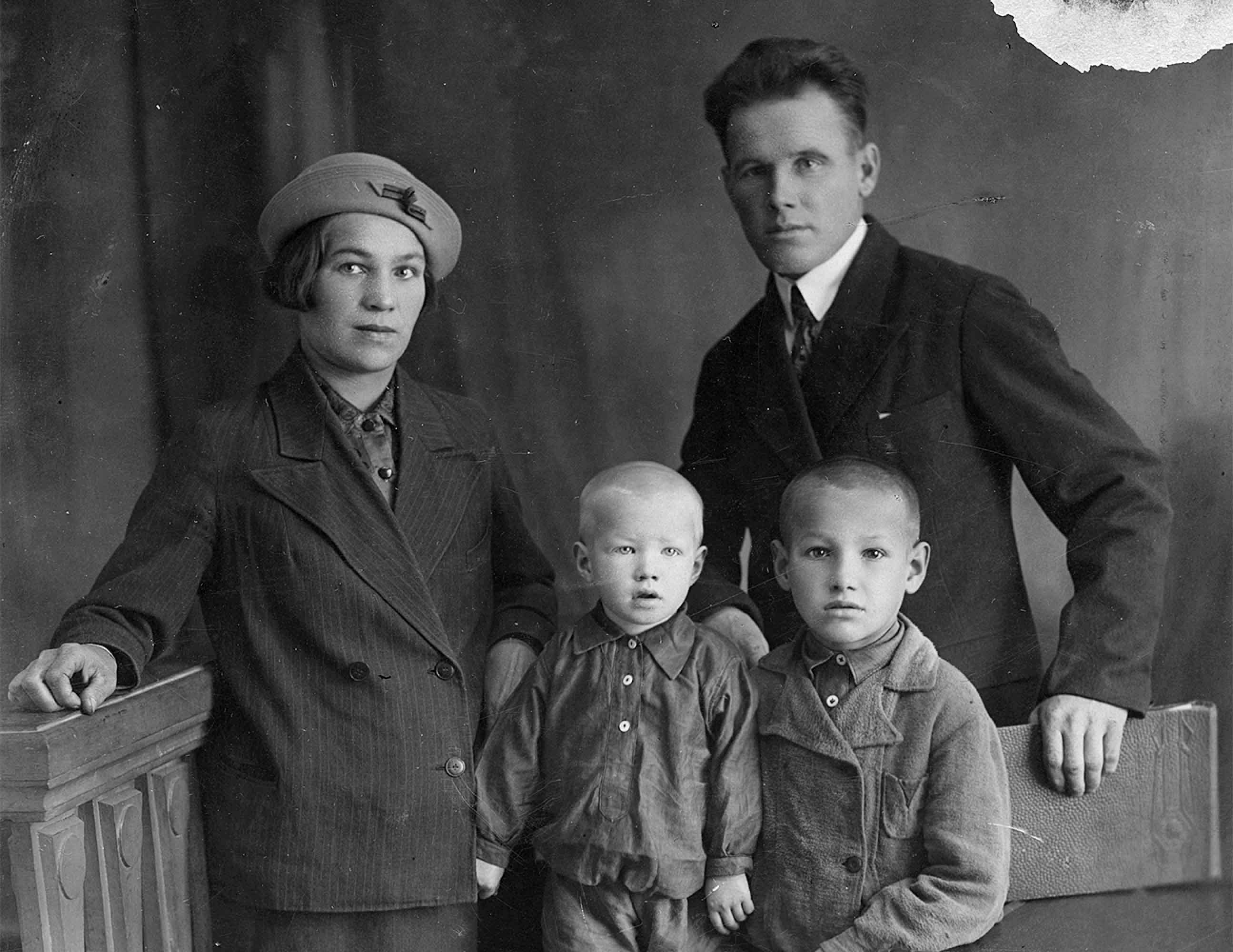
Labyrinth of Russian History
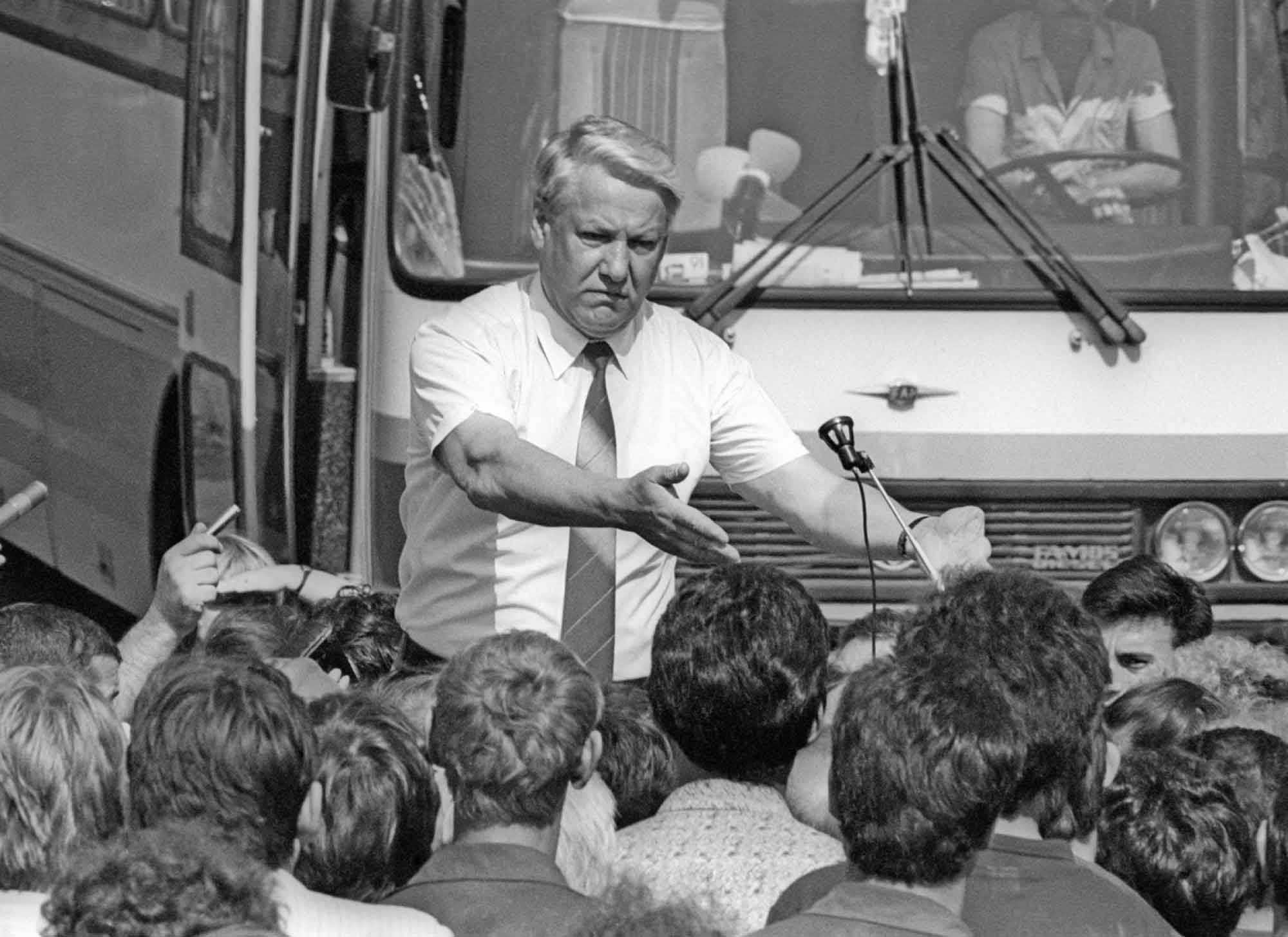
Day One:
“We Are Waiting for Changes!”
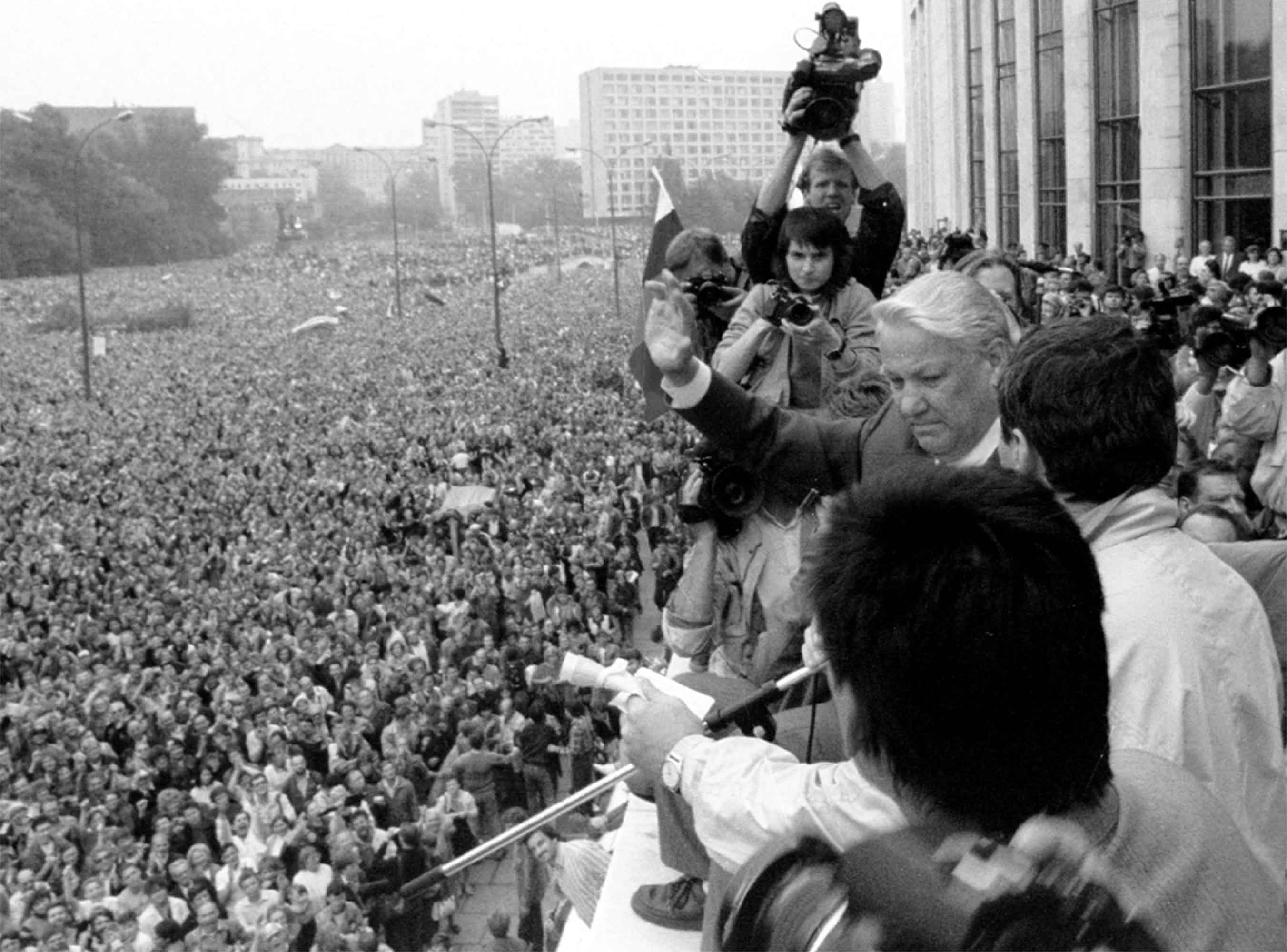
Day Two:
August Coup d’État
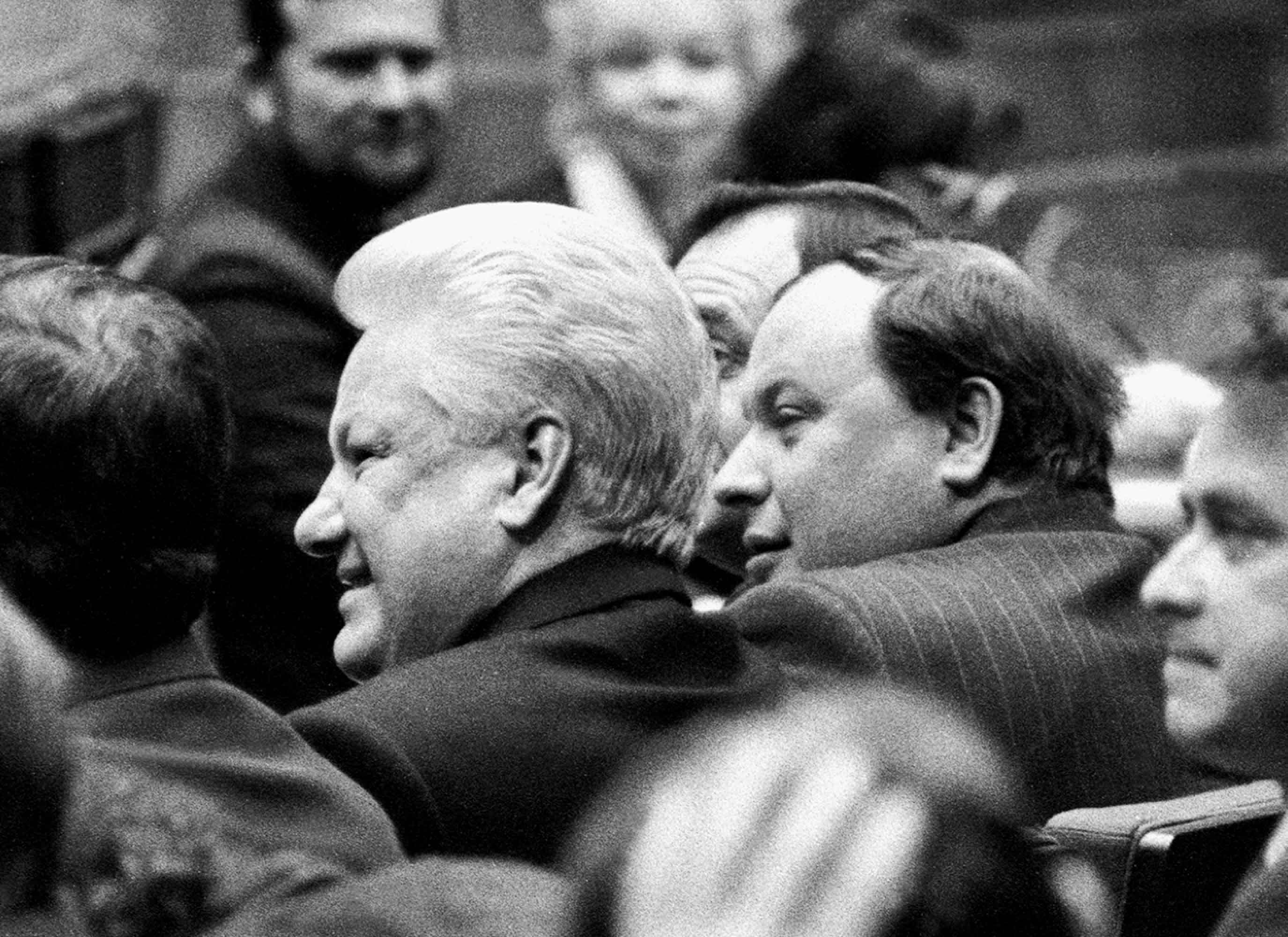
Day Three:
Unpopular Measures
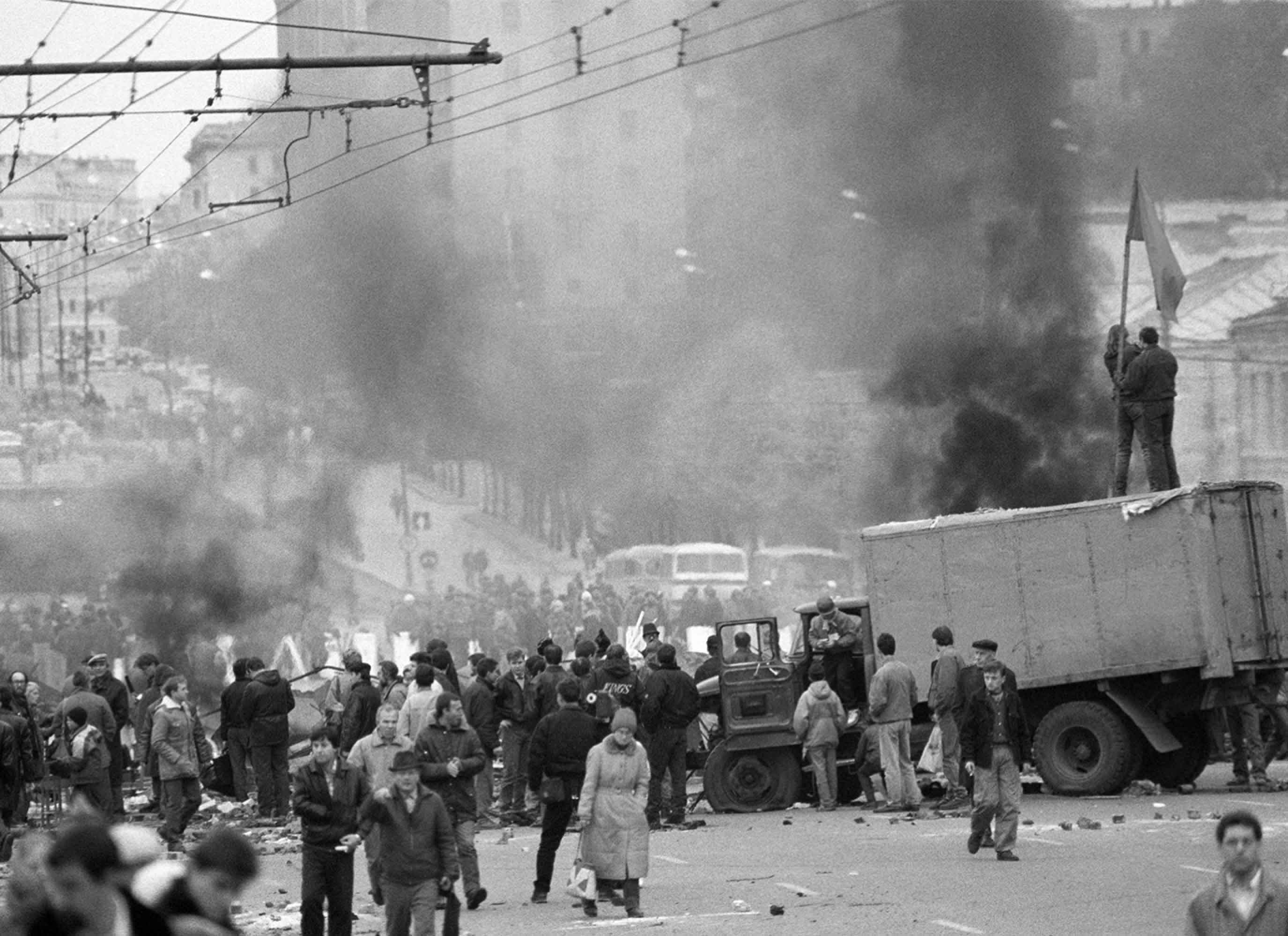
Day Four:
Birth of a Constitution
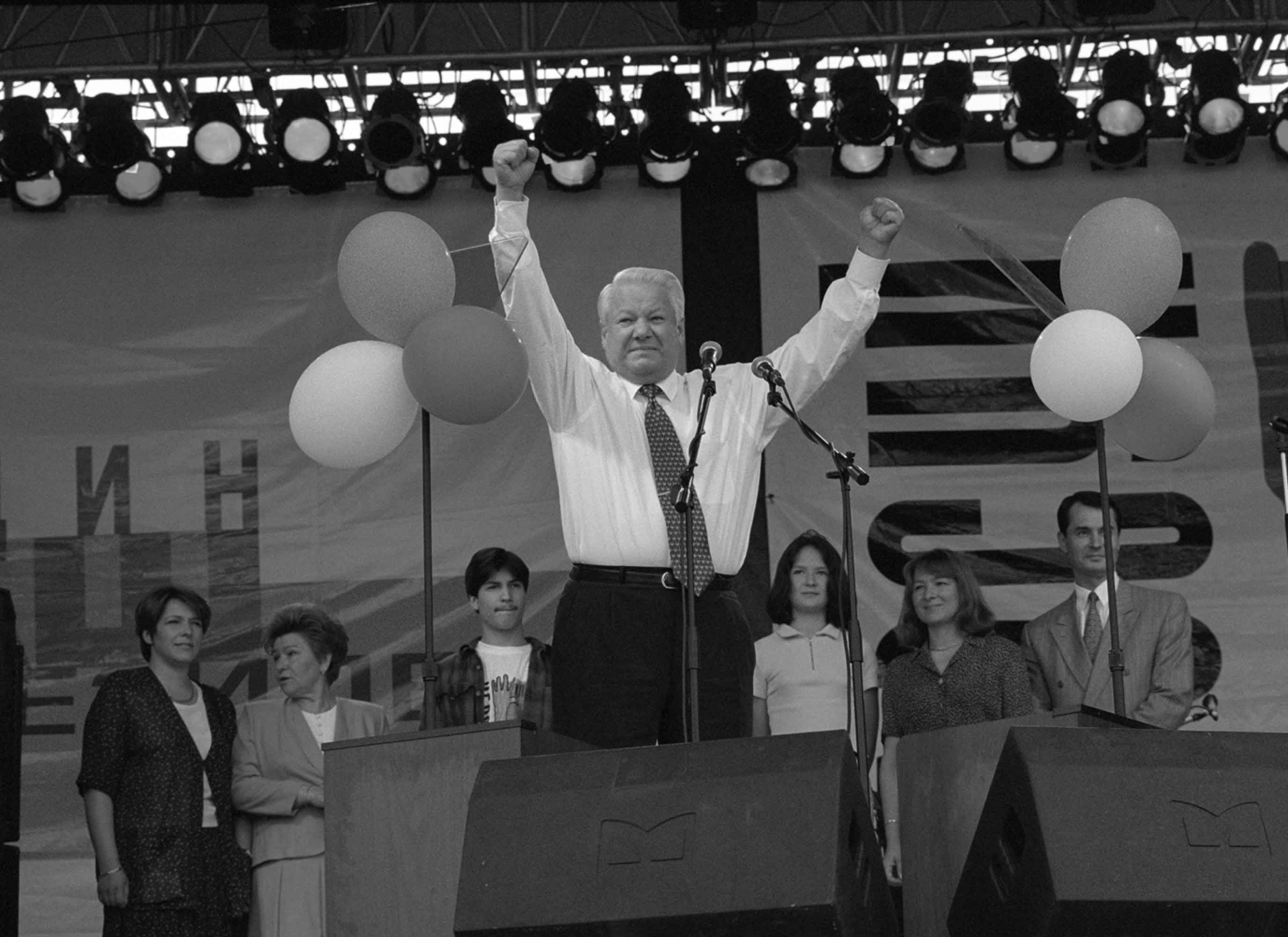
Day Five:
“Vote or Lose”
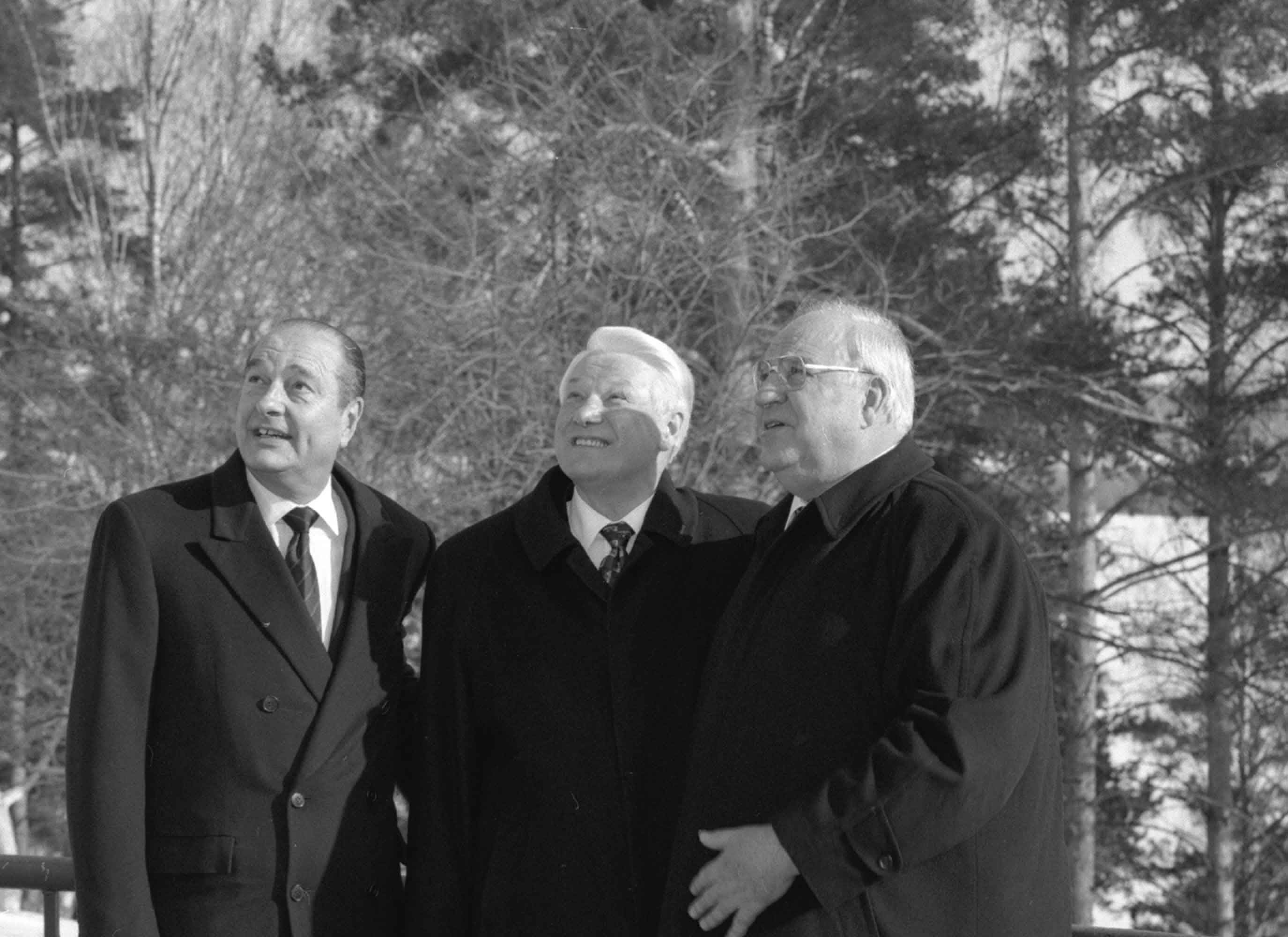
Day Six:
Presidential Marathon
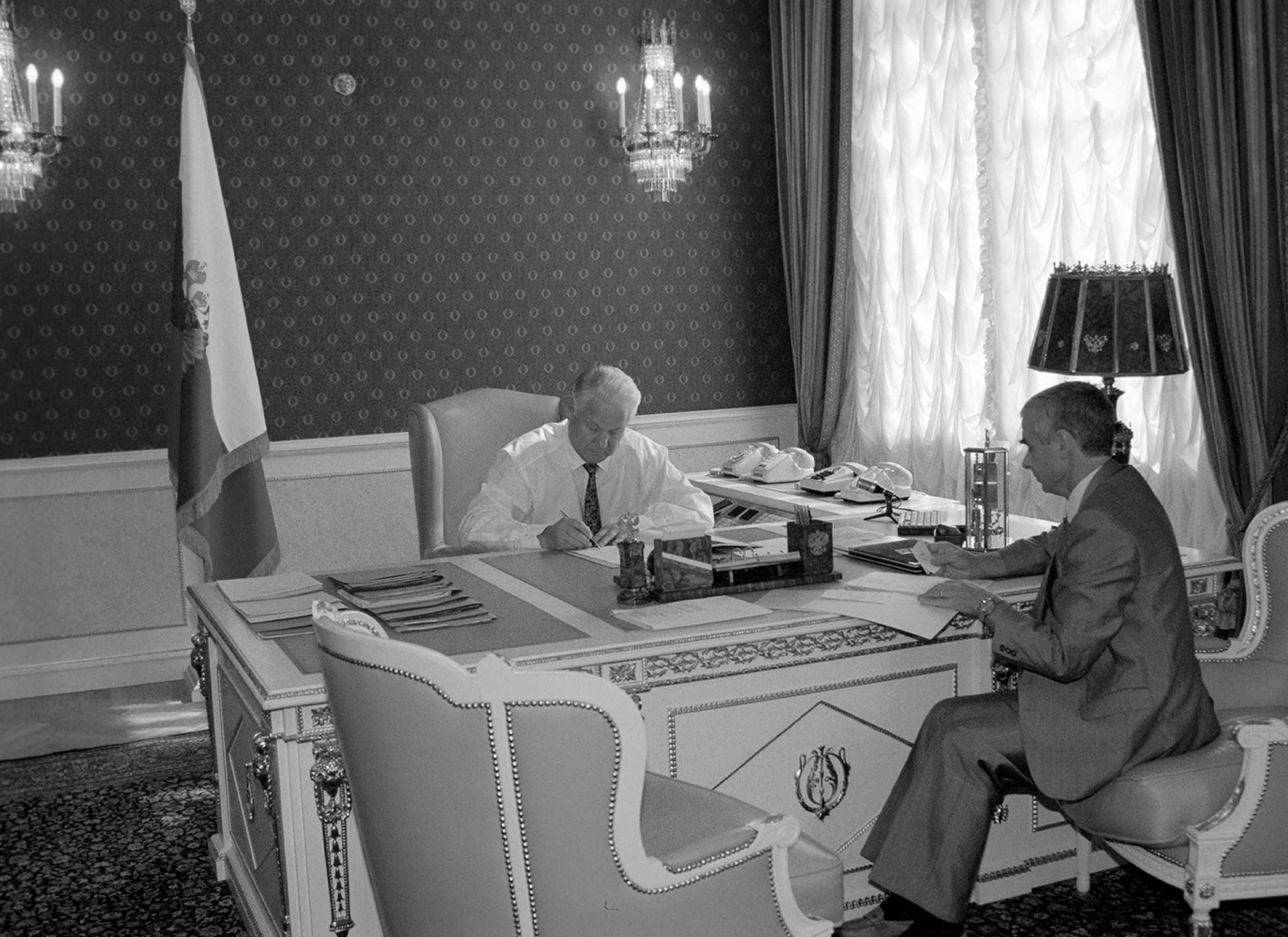
Day Seven:
Farewell to the Kremlin
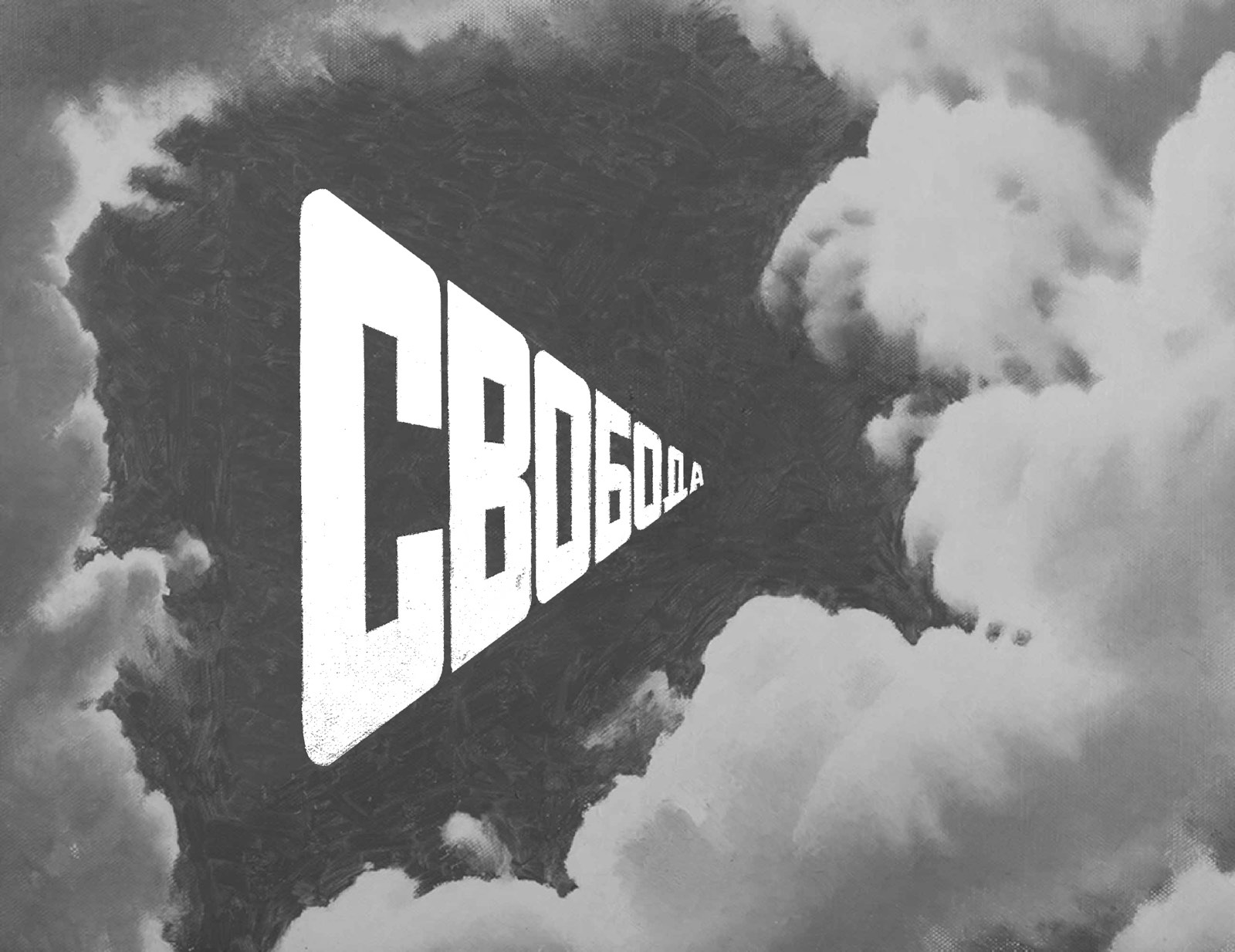
The Hall of Freedom
Labyrinth of Russian History
It is not of a common notice that Russian democracy was born a way earlier than Russian monarchy. Since then, the country has seen ups and downs in search of a balance between strong state power and powerful society. Each time at a turning point of history monarchs, secretary-generals and presidents faced the choice either to make people comply with their will, or to give the will to people. There were few of those who tried to share the power, and even less those who succeeded.
In 1991 Boris Yeltsin, the President of Russia, took the risk of relying on independent choice by citizens rather than on personal power. That is how the history of new, that is, free Russia, began.
Labyrinth is the history of the state from 1914 until 1987, as well as the story of the Yeltsin family.
Day One:
“We Are Waiting for Changes!”
How did Perestroika begin, and what was the role of Boris Yeltsin there? How extensive was the influence of the conflict between the Communist Party leaders (the incoming president of Russia and incoming president of the USSR) to the march of history? At this time, the First Secretary of Moscow City Committee of the Soviet Union Communist Party, comrade Yeltsin, delivered his famous speech. What was the real illustrious address about, and what makes this address genuine, as opposed to many other fake versions, which circulated via underground press (samizdat)? You will find the answers to these and other questions in this room.
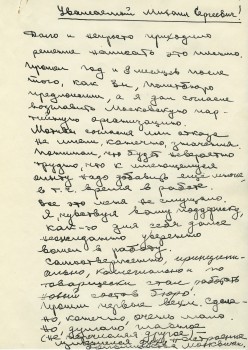
The hand-written letter of Boris Yeltsin (19.09.1987)
One of the unique exhibits in We Are Waiting for Changes room is the hand-written letter of Boris Yeltsin, the First Secretary of Moscow City Committee of the Soviet Union Communist Party, to Mikhail Gorbachev, the General Secretary of the Central Committee of the Communist Party of the Soviet Union, dated September 19, 1987. There, Yeltsin gave reasons to his resignation and withdrawal from Politburo candidates, and provided explicit reasoning why he regarded Politburo’s style of work as incompatible with proclaimed perestroika. The text of this letter has been known recently exclusively by Yeltsin’s book, Against the Grain: an Autobiography originally published in Russian in 1989 as Ispoved’ Na Zadannuiy Temu. In search of exhibits, Museum curators found a facsimile copy of the renowned letter in one of the boxes with documents in Yeltsin’s home office. Judging by paper, the copy dates exactly from the time the letter was written. Yeltsin sent the hand-written version to Gorbachev and kept the copy. That is how a few leaves of paper with text written with an ink pen drastically changed the fate of the First Secretary of Moscow City Committee.
Day Two:
August Coup d’État
How did Boris Yeltsin and his immediate adherents react to dismissal of Gorbachev, President of USSR, from office? How did they elaborate plans to oppose the usurpation of power? How did the spouse and daughter of the President of Russia react to these events? Who walked towards the White House on August 19th, and why? What did Yeltsin’s advocates speak about internally? What were they afraid of, and which songs did they sing? The display in this room is accordingly to historical artifacts, and conveys the atmosphere of those dramatic days. You are sure to feel it, as if you were on the barricades erected on August 19 by defenders of the White House.
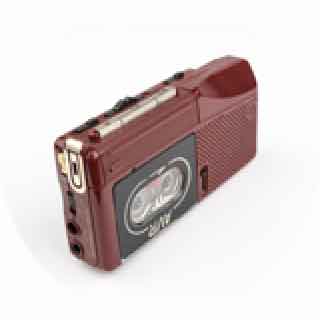
Mini-cassette GE voice recorder
Here you will see true belongings of the White House defenders. Among them is a mini-cassette GE voice recorder, rarely spread in those times. Alexey Pyatkovskiy, a reporter from Grazhdanskoye Dostoinstvo (Civil Dignity in Russian) newspaper, used this recorder that tragic night of August 21, when three defenders of the White House perished in the tunnel under New Arbat street. By chance, Alexey with his recorder witnessed the tragedy. Afterwards, the recorder served his master for long, when Alexey worked as lobby correspondent. Once, the GE “suffered on-the-job” when Zhirinovskiy, a delegate in parliament, did not like Pyatkovskiy’s question, pulled out the recorder and hurled it on the ground. Pyatkovskiy picked up pieces of his service tool and kept it for history. When he knew about the Museum of the First President in Yekaterinburg, he brought the recorder to Yeltsin Center.
Day Three:
Unpopular Measures
Do you all remember empty shop counters in the beginning of 90-s? What about the days when goods and food products started to appear, which were accessible earlier in USSR via shops for Party members only? If you forgot that with time, or do not know how it was, take a walk along replicas of Soviet shop counters in this room. How, with the state in economic collapse, did Yeltsin, a recent Party functionary, went in for making a group of liberal economists led by Yegor Gaidar his immediate teammates? Why the first Russian government got the name of a kamikaze government? To get answers, take some time in this room. Here you have the opportunity to exchange your voucher for shares, make a bargain, or hide them in your bedside table (tumbochka, as they say.) Try it in a state-of-the-art interactive computer game Make Use of Your Voucher.
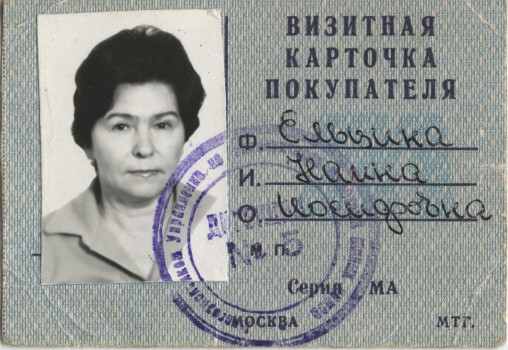
Customer card of Yeltsin’s spouse Naina
One of the exhibits here is a miraculously spared customer card of Yeltsin’s spouse Naina. This card was in family archive of the first President of Russia. Such a card gave the opportunity to buy food products in late 80-s and beginning of 90-s in Moscow. The card, with no doubt, was used quite often, though with due care; it has shabby edges, but is squeezed into a plastic cover with blue piping. On the back of it a signature says, “Boris the grandson” for the use of Boris Yeltsin junior. Another card for Boris Yeltsin senior exists as well. As opposed to the card of Naina Iosifovna, this one must have never been used. It is brand new, as if issued yesterday.
Day Four:
Birth of a Constitution
Who brought out armed units to Moscow streets in October 1993, and what for? How did rumors start about hundreds of victims after October confrontation? Photos and documents in this room will give you understanding how the President of Russia felt like at that critical point of October 1993, and at what price he took his tough policy decisions. The whole story visualized in documents and artifacts in this room comes as it was. You will see these events through the eyes of the Muscovites in the autumn of 1993 and will now perceive this time factually and emotionally.
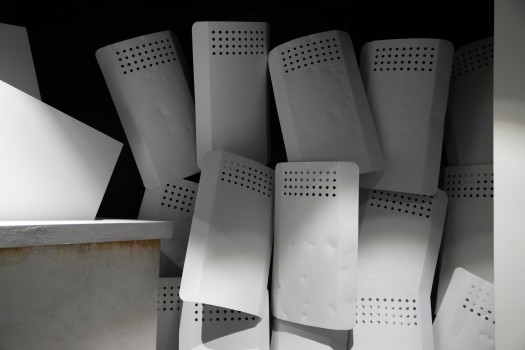
Its official name is Vitrazh AT
Police shield among the exhibits was to protect police (militia) from infuriated crowd. Its official name is Vitrazh AT, means of active protection. It weighs 4 kilos, is made of soft metal, therefore, has limited functions, and does not save from bullets. Vitrazh AT was a true participant of the confrontation. When rioters crumpled up police cordon and seized the shields, they used them as battle tools. In some cases, shields served medical workers to move the injured around. The archive staff specifically searched for such a shield, but none of enforcement agencies agreed to give even one exhibit to the Museum. Officially speaking, they wrote all shields off the inventory. Informally, the procedure of giving away is too complicated. Finally, the exhibit was found at a Moscow reenactment club, where they wanted to restore a Medieval shield. They agreed to hand Vitrazh AT over to the Museum of the First President.
Day Five:
“Vote or Lose”
Who tried to persuade Boris Yeltsin to cancel next scheduled presidential run, and why? Which arguments made him sure that was unacceptable? How did “secret” analytical team of the President’s adherents work? Campaign materials, initially for internal use only during electioneering of 1996, are found in this room to evaluate better the endeavor for and scope of presidential run, as well as intensity of emotions by participants. Videos, t-shirts and badges are the façade, but the true essence of the campaign is exhausting, hard work on the verge of human capabilities of a candidate who won that run.
Among the exhibits of this room are real materials of that campaign. Replicas of some are available at the Museum gift shop
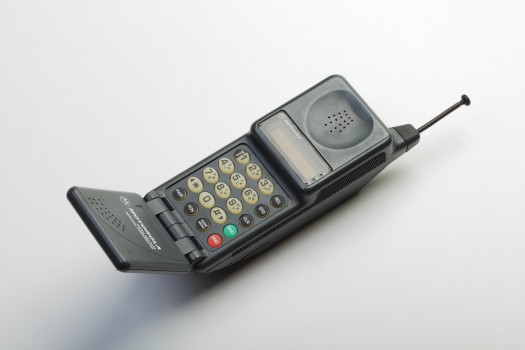
Cell phone given to Yeltsin’s adviser and daughter Tatiana
One of the unique exhibits here is Motorola cell phone given to Yeltsin’s adviser and daughter Tatiana Dyachenko (now Yumasheva). Campaign office was bringing state-of-the art innovations to practice, and mobile phones were extremely rare. This Motorola weighs 300 grams, its lengths, if unfolded, is 34 cm, width is 6 cm. The phone became a full-scale participant of the run, as Tatiana used it to connect with Yeltsin, the contestant for presidency, and coordinated the headquarters work. Tatiana found the “vital” handset occasionally, when she was looking for 1996-campaign materials. The archive staff at Yeltsin Center found a photo to prove that this is the very Motorola that was at work in campaign headquarters of Boris Yeltsin, a contestant for presidency.
Day Six:
Presidential Marathon
Second presidential term of Boris Yeltsin began in a hospital room. Overwork of the preceding years was telling on his health, and the heart of the first President of Russia broke down. Three months after taking the office and first time in history of the state its leader announced publicly about his health issues. He appeared on a federal TV channel, saying that “ischemic heart disease has been diagnosed,” that “operation is required”, and he will not “hold back on it,” and “outlandish surgeons are ready to do it,” but he will “have it operated here, that’s that.”
On November 5th, team of doctors headed by Renat Akchurin got the President operated successfully. Michael Debakey, the great American surgeon who once qualified Akchurin, was watching the work of own student on a monitor in adjacent room.
Exhibits housed in this room will help you to feel the tension of those days, suffered by family members and friends of Boris Yeltsin who realized how serious the situation was and what risks the surgery entailed. Meanwhile, 24 hours after the operation Russia got to know that the President was ready to come back to his duties.
Therefore, normal, that is, intense presidential life of Boris Yeltsin began. Presidential marathon is a series of visits across the whole country, meeting of G8, and polemics with parliament that nearly led to impeachment.
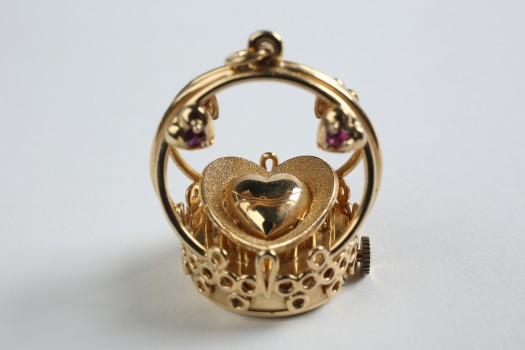
Beating Heart
Among exhibits of this room along with papers and photos, there is an unusual souvenir. Beating Heart is a golden power driven kickshaw, which is winded up with a special key and imitates heart rhythm. Neither family nor friends could recall how and when this remembrance appeared in president’s study at his home. Archive staff of Yeltsin Center took effort to know the story behind a potential exhibit. It emerged that manufacturer Henry Dankner & Sons was located in the United States but closed down not long time before. Dankner donated the archive, paperwork, sketches and molds to the jewelry design department at the Fashion Institute of Technology in New York. There, experts helped to unveil the story of the Beating Heart. This is a sample from Living Charms series. Hearts appeared within a limited edition of 125 samples and were exceptionally popular among cardiologists. Michael Debakey purchased four Hearts and gave one of them to patient Yeltsin after a successful coronary artery bypass surgery.
Day Seven:
Farewell to the Kremlin
On December 31, 1999, the first President of Russia announced his resignation. He did it at 12 a.m. Moscow time, when traditional New Year President’s address, recorded the day before, was on all channels. What remained off screen? Who knew that decision to resign was taken? How did the President’s family and team members react to this decision? Now, you can see with your own eyes what earlier remained behind the scene.
You will have a chance not only to know all details about presidential succession, but visit Bois Yeltsin’s study. That is not a fake set. The furniture, items and papers on the table are all true. In fact, the study room has simply moved to the Museum from the Kremlin.
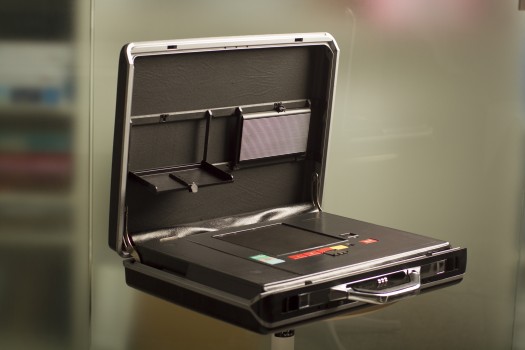
Nuclear Briefcase=
Exhibit No. 1 in the final part of the display is a real nuclear briefcase (yadernyi chemodanchik, as by popular Russian name of it), which had always been kept first by the USSR leader, and then from 1991 by Russian leader. It is “devitalized”, of course, and, therefore, not dangerous any more, even if someone presses the button. The briefcase reposited in the Museum is the body and control panel. Officially, the exhibit bears the name of “Cheget” Mobile Nuclear Capacity Push-Button Control Set. By the way, there is no button to push and set off nuclear missile in this chemodanchik. Instead, there are three buttons for communication and special presidential codes. Presidential Executive Office gave the exhibit to Vladimir Shevchenko, the Chief of Protocol of the first President. None of Russian museums has such an artifact.
The Hall of Freedom
This is a central hall in the Museum of the First President of Russia. Here you can hear what freedom word means for a wide variety of people, from Nursultan Nazarbayev, the incumbent president of Kazakhstan, and Bill Clinton, the 42nd President of the United States, to Liya Akhedzhakova, a famous actress, Ivan Urgant, a showman, Mikhail Zhvanetskiy, a writer, or Andrey Makarevitch, a famous musician. If you do not agree, feel free to speak out. The room houses a special recording studio to give you a chance to record your own video, which will later appear on the screens of the Hall of Freedom. This is how each of you can be a part of open talk about civil liberties.
Новый статус президентского лимузина

«Время открытий» – фестиваль детских музейных маршрутов

Личный маршрут: в поисках новых смыслов

Марина Соколовская. Будем помнить

Первая леди России

«Это война»: фотовыставка к 80-летию Победы

Екатеринбург виртуальный: прогулка по цифровому ландшафту

Конкурс «Я художник — я так вижу» в Музее Ельцина

Читальный клуб: новые смыслы любимых книг

«Зачем я это помню». Павел Руднев – о пьесах о 90-х

«1990-е: взгляд из XXI века»: наука и музейное дело

Выбрать лучшее: Хакатон-2024

Берлинская стена: историческое и культурное наследие

Музейный мир и его секреты — школьникам

Объявлен состав ридеров V конкурса «Зачем я это помню»

Неделя глухих: лекции, экскурсии, встречи

«Общая газета»: история солидарности СМИ и общества

Конференция «1990-е: взгляд из XXI века»

«Форрест Гамп»: голливудская сказка, проверенная временем

Названы победители конкурса пьес о 90-х «Зачем я это помню»

Вокруг флага: День России в Ельцин Центре

Ночь музеев: под знаком научной фантастики

Эрнст Неизвестный: «Я всеми принят, изгнан отовсюду»

Книжный клуб: Булычёв, Лем и братья Стругацкие

«В рифму со временем»: мир поэзии для детей


